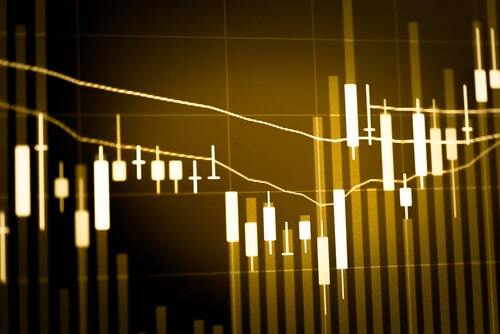
Here is why gold price uptrend is intact – Standard Chartered
The selloff last week did not impact the longer-term uptrend in gold, according to Standard Chartered, which sees weaker U.S. dollar and lower interest rates as the two driving forces behind the gold price rally.
“Despite the steepest sell-off since April 2013, the longer-term outlook remains constructive for gold,” said Standard Chartered precious metals analyst Suki Cooper.
Before last week's jaw-dropping pullback of nearly $200, gold looked overbought and further price gains looked uncertain.
“It will be key whether this profit-taking materialises as short-term tactical liquidation, or increased vulnerability across gold-backed ETPs, prompting caution about upside risk. Open interest and net outflows suggest that investors have liquidated stale longs, not strategic positions,” Cooper wrote on Friday.
The downside risks for gold for the rest of the summer and fall are COVID-19 vaccine, swift economic recovery, weak physical demand for gold, an increase in recycling, and more ETP outflows on rising real yields, the analyst pointed out.
Important element in all of this is that investors do not appear fatigued by the price action in gold, following a massive summer move up towards $2,100 an ounce.
“Barring further profit-taking, we think the longer-term uptrend is intact given USD weakness and the scale of stimulus and as we expect interest rates to remain low or negative. Price dips are likely to be viewed as buying opportunities as the macro backdrop remains favourable for gold,” Cooper noted.
At the time of writing, December Comex gold futures were trading at $1,993.90, up 2.26% on the day.
All of the long-term drivers remain in place — negative real rates, weak U.S. dollar, and inflation expectations.
“Over the past two weeks, gold prices have signalled greater risk aversion than other assets that usually benefit from a flight to safety, partly as longer-term investors turn to gold as a diversifier. Some of the recent interest in gold has been spurred by expectations of further stimulus measures and concerns that balance-sheet expansion globally could lead to higher inflation,” Cooper said.
The weakest link is the physical demand out of Asia, which is still lacklustre. High gold price in local currencies as well as the coronavirus-related issues are all weighing on demand.
“The local gold price in India has eased from record highs above 56,000 INR/10g, but not by much. The local market has swung sharply back to a premium, but the increase has been driven by lower inventory rather than higher demand during the seasonally slow period for demand. Seasonal demand tends to materialise in September; even though the monsoon forecast should support a recovery in demand, high and volatile prices may offset this,” Cooper said.
Central bank gold buying has also slowed with some central banks proceeding with “modest sales,” the analyst added. “We expect net buying of 360t in 2020.”
Turkey is one of the central banks still buying gold this year, purchasing 220 metric tons year-to-date.
By Anna Golubova
For Kitco News
David